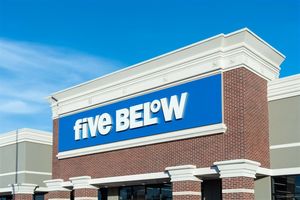BOSTON, Sept. 04, 2023 (GLOBE NEWSWIRE) -- Verisk (Nasdaq: VRSK), a leading global data analytics and technology provider, estimates industry insured losses to onshore property for Hurricane Idalia will range from USD 2.5 billion to USD 4 billion. The industry loss estimate includes estimated wind damage and insured estimates of storm surge across Idalia’s track. A majority of the losses will be from damage due to wind.
At around 7:45 a.m. EDT on August 30, Hurricane Idalia made landfall in Taylor County within Florida’s Big Bend region, near Keaton Beach, as a Category 3 hurricane.
While Idalia made landfall in a sparsely populated region of Florida, catastrophic damage was observed in small communities like Perry, which took the brunt of the storm’s fierce western eyewall shortly after landfall, and Cedar Key, which experienced historic storm surge inundation. Fortunately, Tallahassee was largely spared from the worst as the storm’s center passed 60 miles to the east and saw three inches of rainfall and wind gusts into the 40s mph.
Idalia’s forward speed brought the then Category 1 storm over the state boundary into Georgia near Valdosta. Significant damage was observed in Valdosta, where remnants of the western eyewall deluged the area with six inches of rain and brought powerful winds. As a result, widespread flooding and considerable structural and roof damage ensued.
Idalia’s northeast track led the storm offshore in the early morning of August 31. While located offshore, Idalia brought tropical storm-force winds, heavy rain and powerful surf to the North Carolina coast.
Wind and storm surge damage
Wind damage in varying degrees was observed in all the areas impacted by Hurricane Idalia’s wind field. Damage was more severe in and around the areas where Idalia made landfall in the Big Bend region of Florida, including Taylor and Suwanee counties. It ranged from significant loss of roof covers in residential homes to torn-up roof membranes in commercial structures.
Varying levels of damage inflicted by fallen trees was observed along the path of Idalia. Cities including Tallahassee, Gainesville, Jacksonville, FL and Valdosta, Savannah, GA are reporting a large number of downed trees. This area is dominated by large pine trees, and these can lead to costly cleanup costs, roof replacements and associated costs. A similar phenomenon was seen in the aftermath of 2018’s Hurricane Michael in the city of Tallahassee where losses in excess of $1B were seen and driven primarily by tree-related damage. However, Hurricane Michael was much stronger than Idalia in its closest approach to Tallahassee.
Manufactured homes constitute a significant portion of the residential inventory in the Big Bend region of Florida where Idalia made landfall. Several manufactured homes in these areas saw massive damage, including loss of roofs, damage to wall siding and near-total destruction due to wind and surge alike, the latter in coastal areas.
Storm surge produced significant damage in the coastal neighborhoods of Keaton Beach, Steinhatchee, Horseshoe Beach and Cedar Key, FL. Manufactured homes were washed away due to the dynamic impact of fast-moving coastal surge. Residential homes founded on slabs saw significant water-related damage to various building components and contents. Beachfront homes elevated on piles/stilts performed relatively well. Flooding along the waterfront areas was reported in and around Tampa, St. Petersburg, FL and Charleston, SC.
How building codes are reflected in the damage
The Big Bend region of Florida where Idalia made landfall, has the lowest design winds statewide, between 120 and 130 mph.
Areas along the coast and inland are excluded from the wind-borne debris region, which means opening protection and stronger opening requirements are not required in the buildings in this region. The same is true for southwestern parts of Georgia that experienced strong winds from Idalia.
A major hurricane similar to Idalia has not impacted this region for over 125 years, since the unnamed hurricane in 1896.
A significant portion of the building inventory along the track of Hurricane Idalia predate the International Codes, i.e., are built prior to the year 2000. Owing to the aforementioned factors, the damage is expected to be severe in the vicinity of landfall.
Relative to last year’s Hurricane Ian, Idalia has impacted far fewer buildings, meaning the overall stresses on the construction industry should be far less as rebuilding gets underway in the coming weeks and months.
Verisk’s modeled insured loss estimates do include:
- Losses to onshore residential, commercial and industrial properties and automobiles for their building, contents and time element coverage
- Impact of demand surge
Verisk’s modeled insured loss estimates do not include:
- Losses paid out by the National Flood Insurance Program
- Losses exacerbated by litigation, fraudulent assignment of benefits or social inflation
- Storm surge leakage losses paid on wind only policies due to government intervention
- Losses from precipitation-induced flooding
- Losses to inland marine, ocean-going marine cargo and hull and pleasure boats
- Losses to uninsured properties
- Losses to infrastructure
- Losses from extra-contractual obligations
- Losses from hazardous waste cleanup, vandalism or civil commotion, whether directly or indirectly caused by the event
- Losses resulting from the compromise of existing defenses (e.g., natural and man-made levees)
- Loss adjustment expenses
- Other non-modeled losses, including those resulting from tornadoes spawned by the storm
- Losses for U.S. offshore assets and non-U.S. property
###
About Verisk
Verisk (Nasdaq: VRSK) is a leading strategic data analytics and technology partner to the global insurance industry. It empowers clients to strengthen operating efficiency, improve underwriting and claims outcomes, combat fraud and make informed decisions about global risks, including climate change, extreme events, ESG and political issues. Through advanced data analytics, software, scientific research and deep industry knowledge, Verisk helps build global resilience for individuals, communities and businesses. With teams across more than 20 countries, Verisk consistently earns certification by Great Place to Work and fosters an inclusive culture where all team members feel they belong. For more, visit Verisk.com and the Verisk Newsroom.

Media Contact Mary Keller Verisk 617-954-1754 mary.keller@verisk.com




